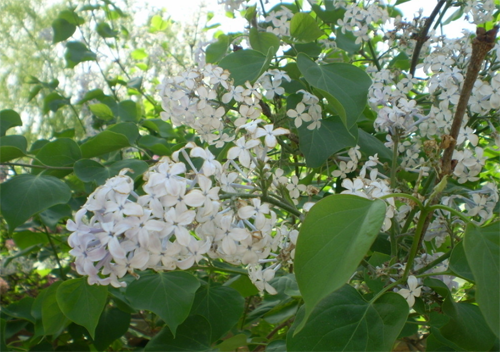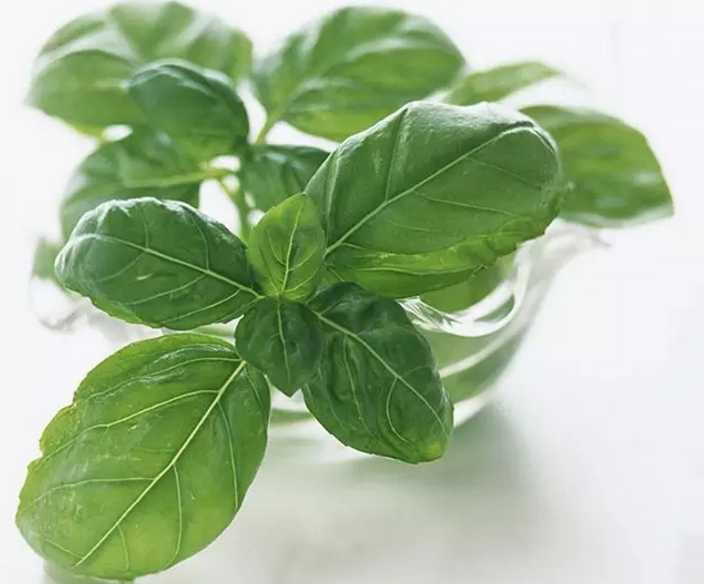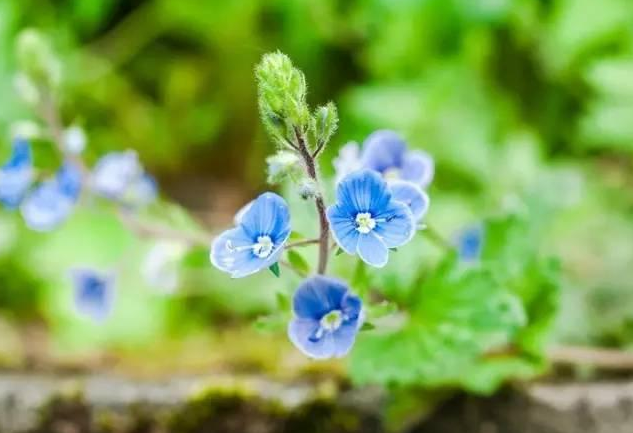How to grow and propagate cloves and when to bloom
Lilacs look good, but there is a feeling of sadness at a glance, because lilacs have a song that is more sad. Let's see how lilacs are planted. What is the breeding method of lilac? When will the lilacs bloom?

How to grow lilacs:
Cloves like sunshine, slightly shade-resistant, cold-resistant, drought-resistant, moist, and avoid waterlogging. Strong stress resistance, lax requirements on the soil, but suitable for growing in fertile, loose, well-drained soil, do not plant in low-lying shady and wet places.
1. Transplanting
Cloves should be transplanted before sprouting in early spring. In the transplanting hole, we should first apply sufficient base fertilizer, cover the base fertilizer with a layer of soil, and then put seedlings to fill the soil. Watering once after planting, and then watering 2murine water for 3 times can survive. Cloves have strong adaptability and extensive management. at ordinary times, as long as we pay attention to weeding, waterlogging in rainy season and watering in drought, we can grow smoothly. Cloves do not like big fat, do not fertilize too much, so as not to cause branches to grow and affect flowering. It is generally possible to apply rotten compost once a year or every other year before winter.
2. Pruning
Before sprouting in the middle of March, cloves should be shaped and pruned. Sulfur should be removed from dense branches, weak branches, disease and insect branches, and vigorous long branches should be cut off to make the canopy ventilated and transparent. If there is no seed left after the flower fade, the residual flower together with the two buds in the lower part of the flower ear can be cut off to reduce nutrient consumption and promote the germination of new branches and the formation of flower buds. After falling leaves, you can also carry out a pruning to keep the crown round and beautiful, which is conducive to growth and flowering in the coming year.
3. Diseases and insect pests
There are few diseases and insect pests of cloves. The main pests are aphids, pocket moths and thorns. It can be sprayed with 80-1000 times 40% dimethoate emulsion or 1000 times 25% imidophos emulsion.
Propagation methods of lilac flowers:
1. Sowing seeds
Sowing takes place in early April. Soak the seeds in 40-50 ℃ hot water for 1-2 hours, remove and mix with one part or two parts of sand, place in the sunny place, cover with straw bags or gunny bags, and often water them to keep them moist. After about a week, the seeds can germinate and then sow.
2. Cloves can be planted or potted. When transplanting, the root should carry as much soil as possible, so that it is easy to survive.
If planted on barren land, it can grow, but the flowers are not small, and the growth is thin. Therefore, it is appropriate to plant in the sunny, fertile, deep soil. When planting, it is necessary to bring soil clots, cut off some branches appropriately, and pour enough water after planting.
In the future, when the weather is dry in spring every year, the buds should be watered once before and after flowering. Cloves do not like big fertilizer, do not fertilize too much, otherwise it is easy to cause overgrowth and affect flowering.
After the flower fade, the residual flowers are cut off and the dense branches are removed, which is beneficial to ventilation and light transmission and beautiful tree shape, and is beneficial to promote the germination of new branches and the formation of flower buds.
Cut off the disease and insect branches, withered branches and slender branches, and cut off the crossed branches, overgrown branches, overlapping branches and overdense branches properly.
When do lilacs bloom:
Lilac, also known as lilac, lilac, etc., is a very beautiful shrub flower. It can grow to 4mi 5m high, with dark gray or grayish brown bark, furrowed, smooth branches and glabrous.
Its leaves are oval, flowering in early spring, single or double flowers, is a famous garden flower in China. The florescence is from April to May.
This is the end of the introduction on the methods of planting and reproduction of lilacs. When it comes to the season of lilac blossoms, remember to enjoy the flowers.
How to cultivate lilacs and reveal the secrets of its management
Fragrant flowers are indeed very beautiful, with the glorious nickname of the Heavenly Flower, perhaps because of its noble fragrance, it has been cherished since ancient times. This article introduces how to breed lilacs. It is reported that lilac (Mezereon) flower language: Bright. Those who are blessed by this flower will be blessed by the gods and have a glorious life. But because he is too smart, he likes to take shortcuts. So I hope that in the process of pursuit, don't forget the ultimate goal.
How to cultivate lilacs
Planting method: clove flowers should be planted on the ground, or potted. When transplanting, the root should carry as much soil as possible, so that it is easy to survive.
How to plant lilacs?
1. When planting, you need to bring soil clots, cut off some branches properly, and pour enough water after planting. After that, when the weather is dry in spring every year, the buds should be watered once before and after flowering. Cloves do not like big fertilizer, do not fertilize too much, otherwise it is easy to cause overgrowth and affect flowering. Generally, the nutrients in the soil can be replenished by applying rotten compost once a year or every other year before winter.
How to cultivate lilacs
2, lilac sex like sunshine, slightly shade, like moisture, avoid stagnant water, cold and drought tolerance, in general, flowers have no luster. If planted on barren land, it can grow, but the flowers are not small, and the growth is thin. Therefore, it is appropriate to plant in the sunny, fertile, deep soil.
3. After the flower fade, if there is no seed, the remnant flower together with the two buds in the lower part of the flower ear can be cut off, and part of the dense branches can be removed at the same time, which is beneficial to ventilation, light transmission and beautiful tree shape, and can also promote the germination of new branches and the formation of flower buds. After defoliation, disease and insect branches, withered branches and slender branches can be cut off, and cross branches, overgrown branches, overlapping branches and over-dense branches can be properly truncated to make the branches evenly distributed and keep the crown round for the growth and flowering of the following year. Cloves are planted in the ground, and special attention should be paid to drainage and waterlogging in the rainy season. Because of stagnant water for too long, it is easy to die of fallen leaves.
How to cultivate lilac flowers in potted plants
Lilac flowers are elegant in color and fragrant, so they are very good ornamental flowers. It is very suitable for planting in the courtyard or potted culture indoors, which can not only purify the air but also improve the fengshui of the home. How to grow lilacs? Learn about the cultivation of lilac flowers together with Xiaoqi.
First, how to raise lilacs
Lilac is still very easy to grow, lilac requirements are not high, generally speaking, stocking is completely no problem, give some soil to water can grow and blossom, typically give some sunshine I will brilliant flowers. Lilacs like sunshine, shade, cold and drought, and they don't have to be watered often. watering every two or three days is no problem, and lazy people who like to grow flowers are blessed. There is no need to apply fertilizer frequently, too much fertilizer will affect flowering. But be careful to keep warm. If the temperature is lower than 3 ℃, you can tamper with the flowerpot a little and move the flowerpot in.
2. Culture methods of lilac flowers
1. Soil: lilac flowers do not have high requirements for soil. As long as the soil is fertile, loose and well drained, it is suitable for lilac growth.
2. Watering: the management of lilac is relatively extensive, and the ability to adapt to the environment is relatively strong. Usually, as long as you pay attention to weeding, waterlogging in rainy season, and watering during drought, you can grow smoothly, and you don't need to care too much about whether you should be watered at other times.
3. Lighting: lilac is a kind of flower and plant that likes light, so it is better to plant it in a place that can be exposed to sunlight.
4. Temperature: the climate of the original producing area of lilac belongs to the equatorial rain forest climate, and the lowest monthly average temperature is 21 degrees, so we should pay attention to temperature control when we breed, try not to make the temperature too low, below 3 degrees will lead to plant death.
5. Fertilization: during cultivation, it should be noted that lilacs are sunny, slightly shady, cold-tolerant, drought-resistant, lax on the soil, but suitable for fertile, loose, well-drained soil. Cloves have strong adaptability and extensive management, as long as they are kept moist. Cloves do not like big fat, we must avoid fertilizing too much, so as not to cause branches to grow and affect flowering.
The above is the introduction of lilac culture methods, hoping to help friends who like lilac, better cultivation of lilac.
- Prev

Basil hydroponics method step by step often change water
Basil is a plant that can be eaten and tastes a bit like fennel. Basil can not only be used to eat, but also can be hydroponically cultivated. Let's take a look at the steps of basil hydroponics: materials: 10cm basil branches cut off with leaves. Container: transparent glass
- Next

What are the medicinal values of Borna's breeding methods?
You know, mother-in-law is still quite common, and it can be seen in many places, but many people do not know that this is mother-in-law. Let's take a look at her breeding method. What are the medicinal values of mother-in-law? The breeding method of mother-in-law: raising seedlings
Related
- Fuxing push coffee new agricultural production and marketing class: lack of small-scale processing plants
- Jujube rice field leisure farm deep ploughing Yilan for five years to create a space for organic food and play
- Nongyu Farm-A trial of organic papaya for brave women with advanced technology
- Four points for attention in the prevention and control of diseases and insect pests of edible fungi
- How to add nutrient solution to Edible Fungi
- Is there any good way to control edible fungus mites?
- Open Inoculation Technology of Edible Fungi
- Is there any clever way to use fertilizer for edible fungus in winter?
- What agents are used to kill the pathogens of edible fungi in the mushroom shed?
- Rapid drying of Edible Fungi

